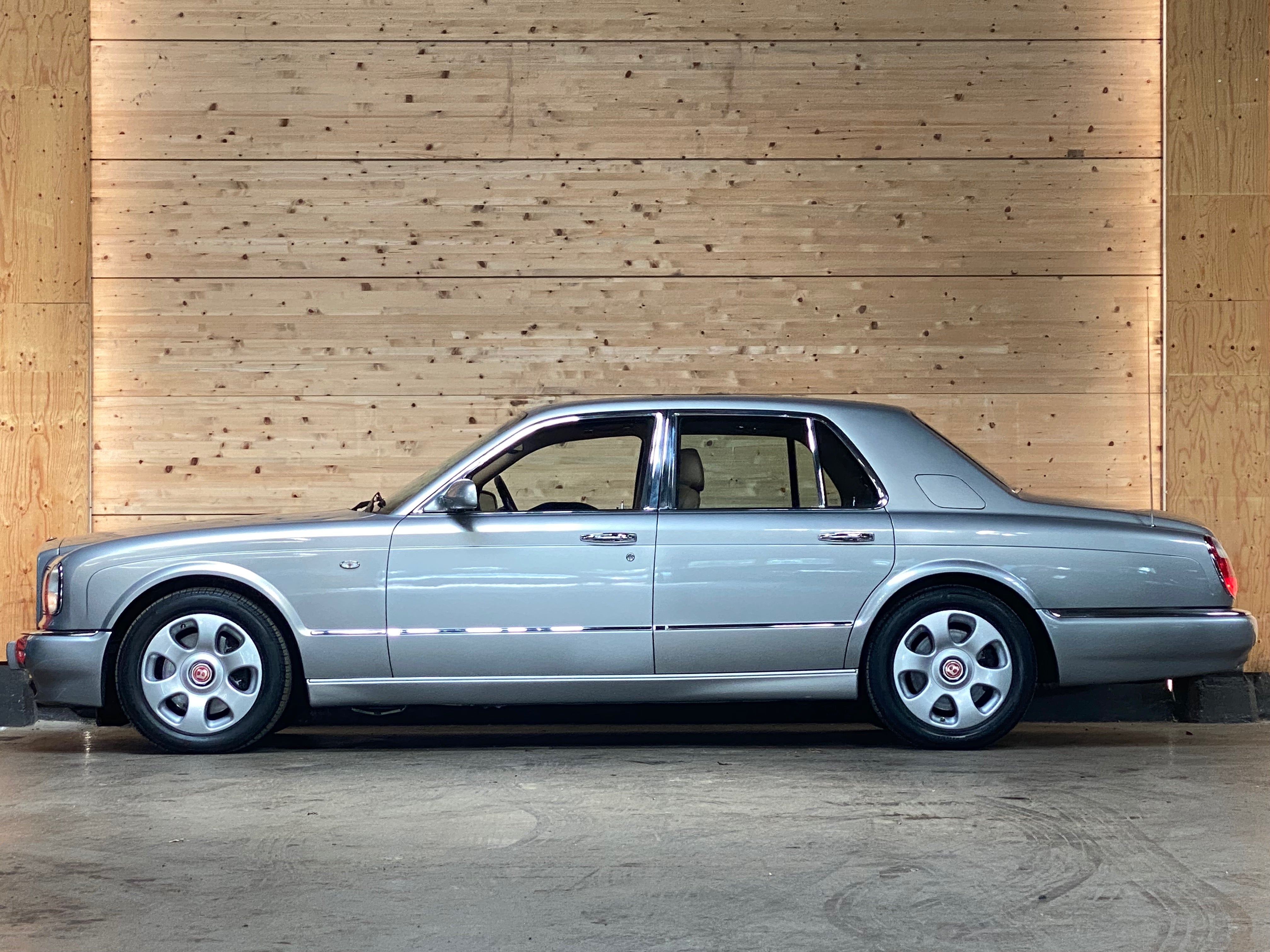



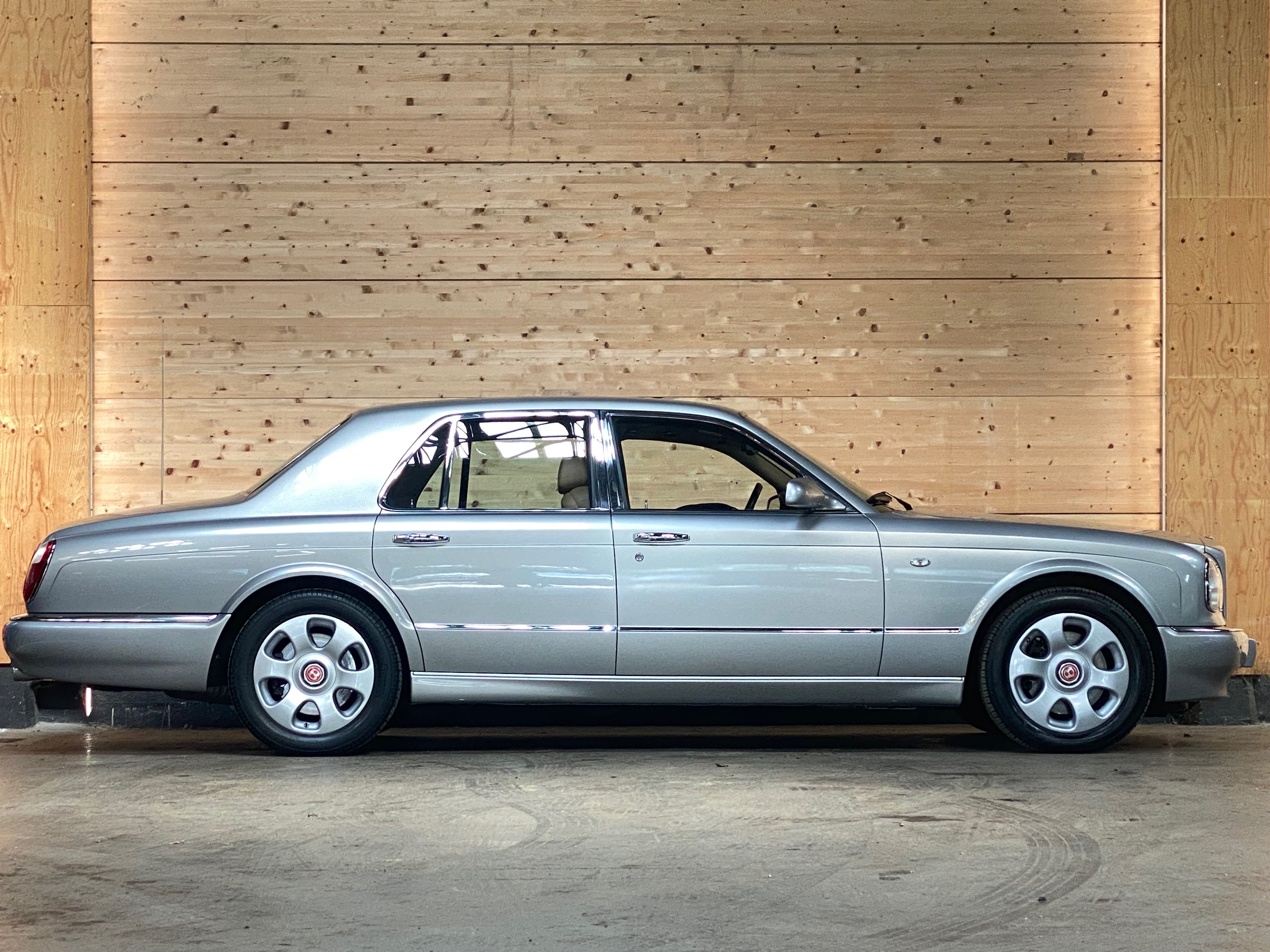






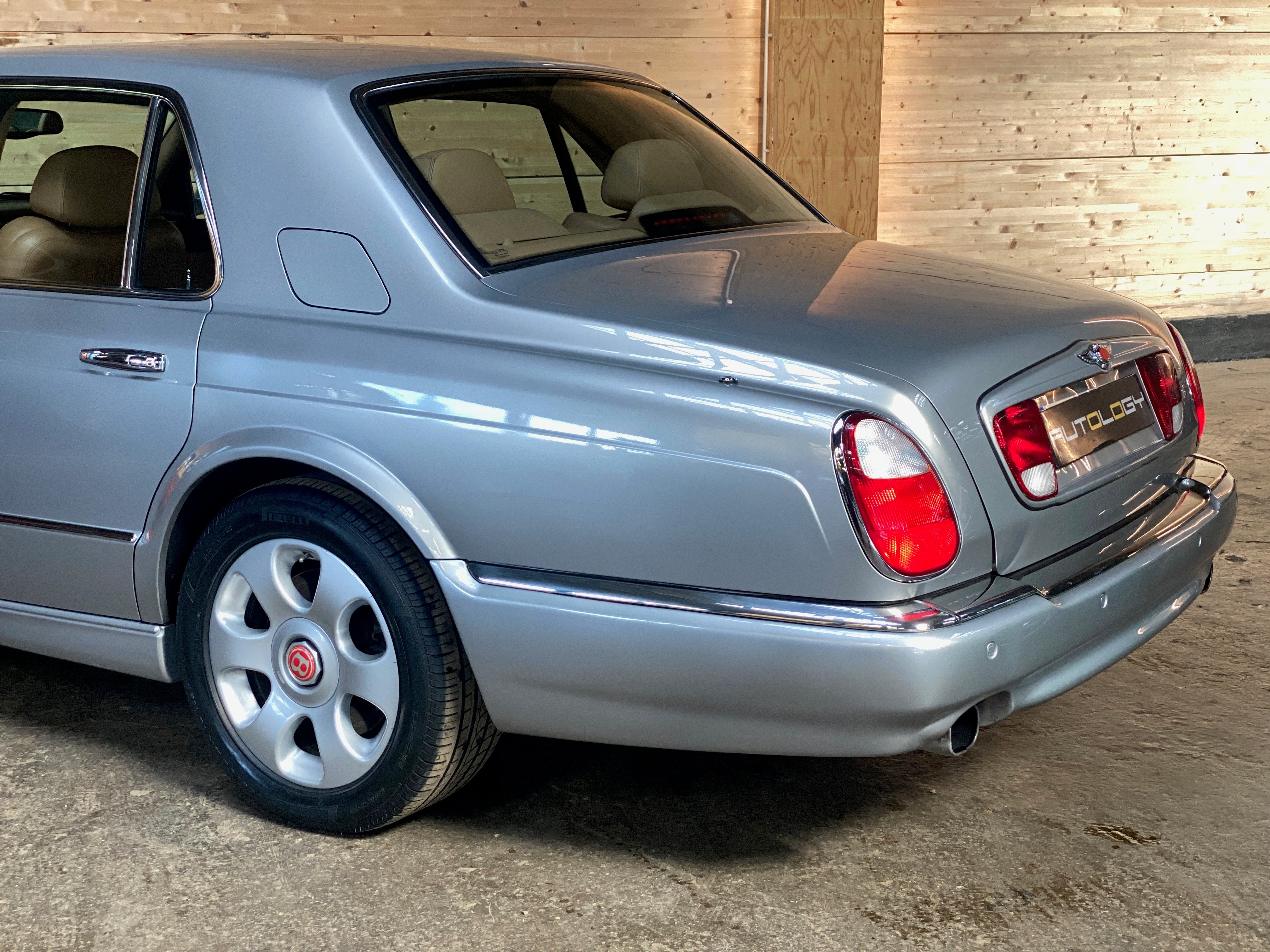

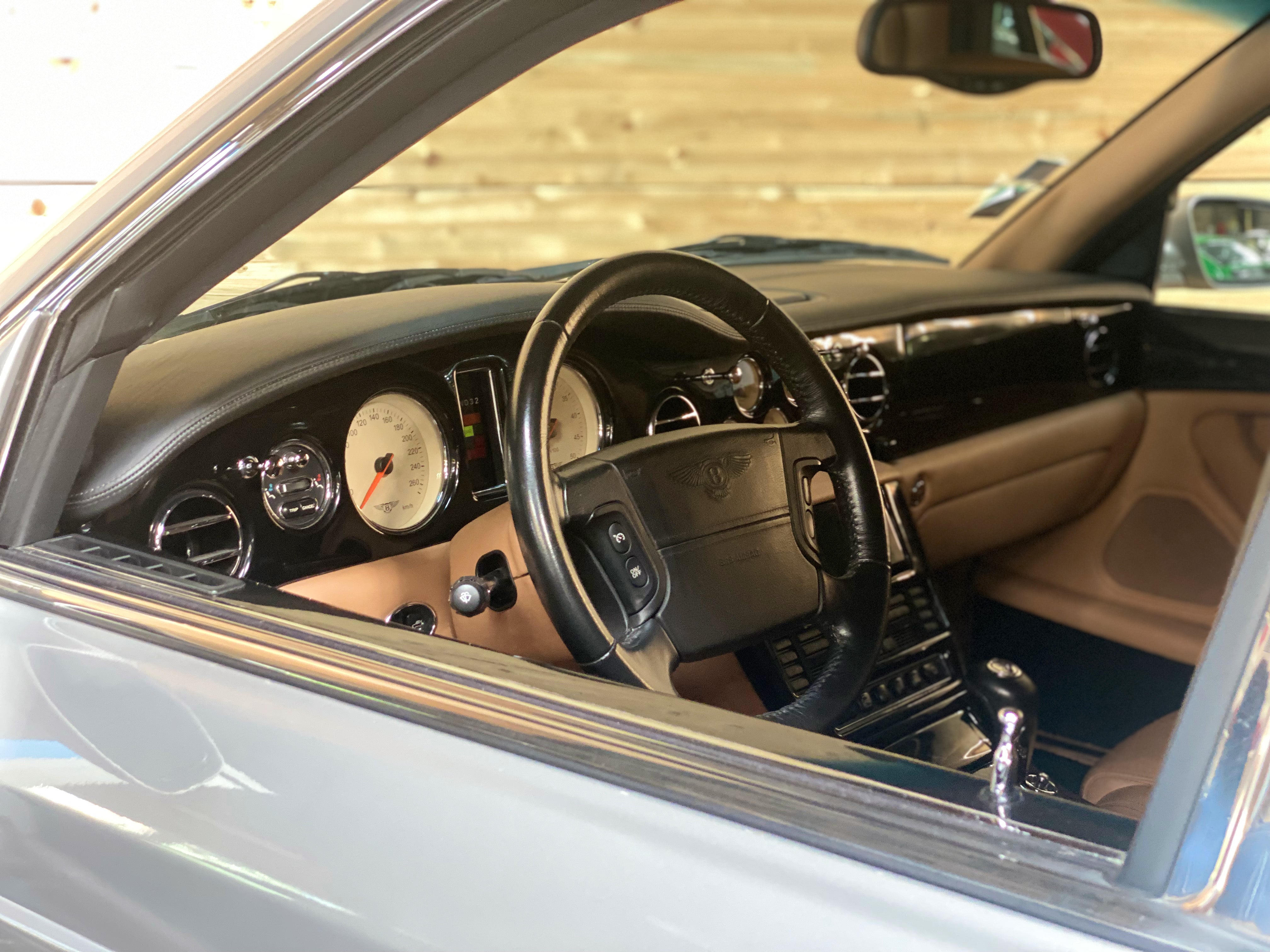


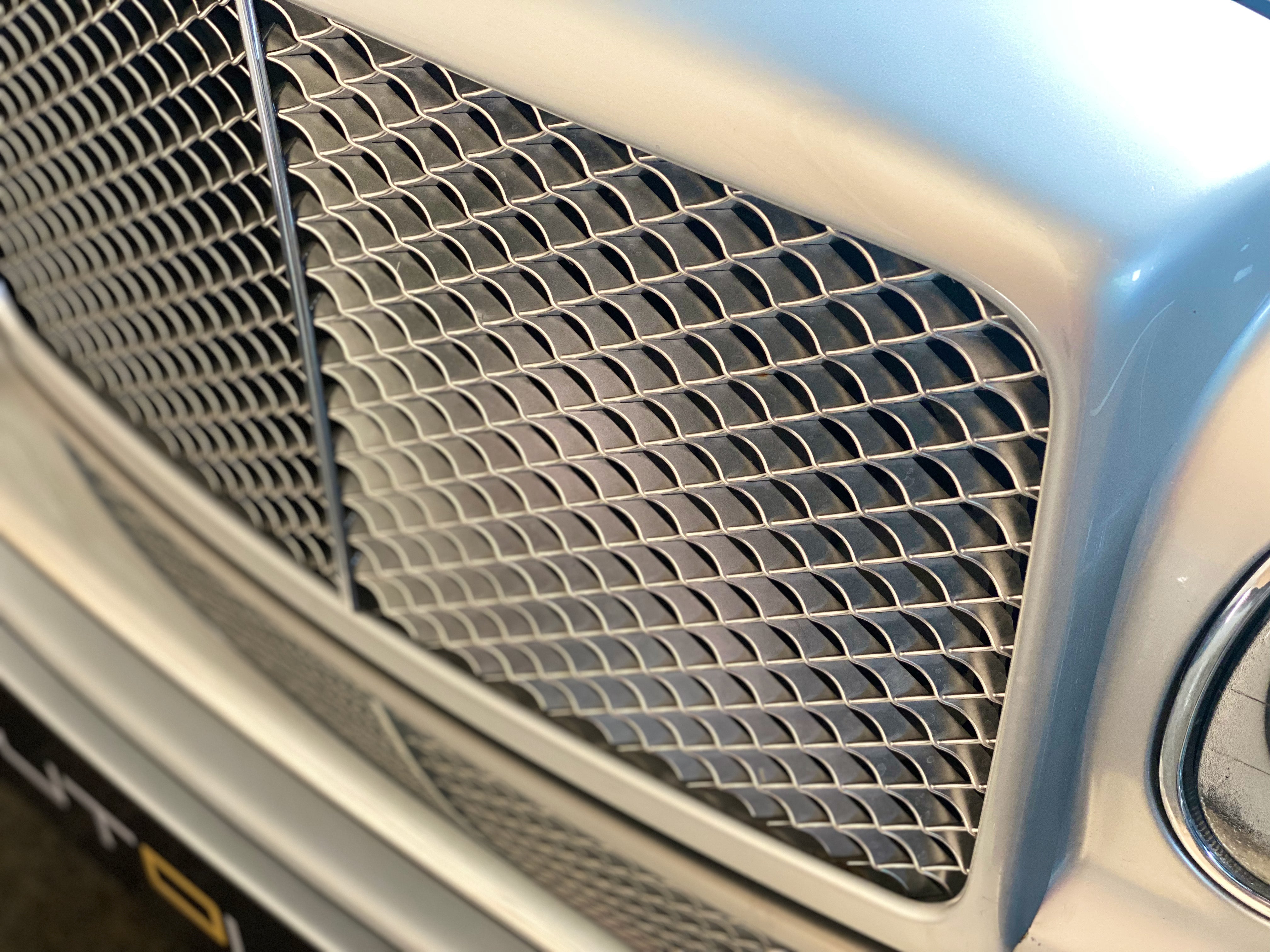



















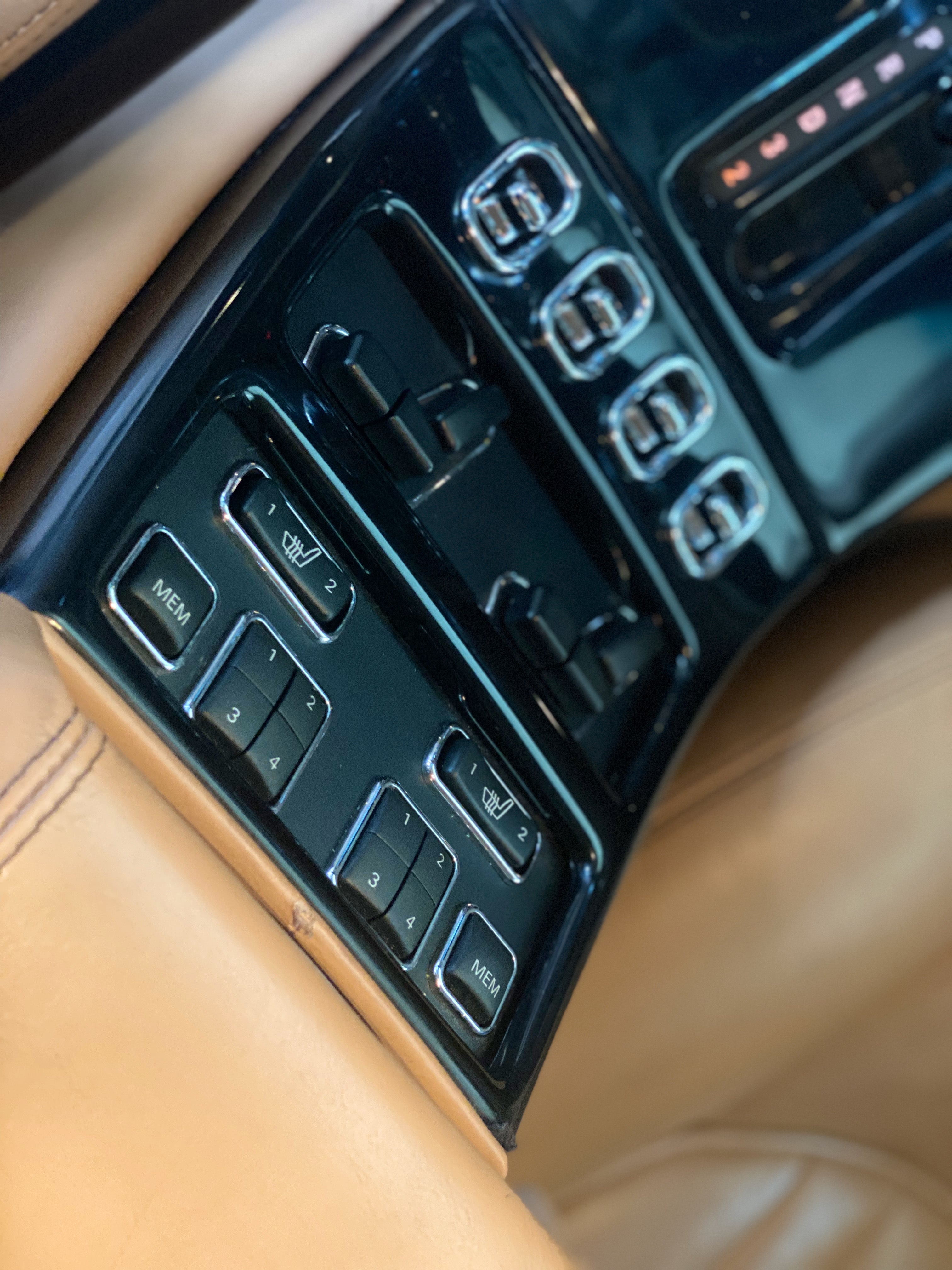









Bentley Arnage Red Label
2001 / 70 478 km

Specifications
Bentley
Arnage
2001
35 tax CVs
6.75
Propulsion
Non
68478
Beige
Gris
Essence
Automatique
Historique
The story of the Bentley Arnage is particularly interesting because it takes place at a delicate moment in the history of the brand. Born with a BMW engine and with the help of the men of Munich, it will be one of the rare models of the world automobile to go back to an older engine, and to tell the truth downright technologically backward, while finding a larger clientele. Why did Bentley make this astonishing choice, that of offering two versions of the same car, one with a BMW engine, the other with an old-style "6 ¾" engine, pushing the clientele to choose the second rather than the first?
When the Rolls-Royce group decided to find an heir to the aging Silver Spirit/Spur and its cousin Bentley Mulsanne/Eight/Brooklands, the situation was not particularly flourishing. The luxury car market had collapsed in the early 90s, and the Vickers group, owner of both brands, absolutely did not have the means to develop a new engine capable of replacing the venerable 6.75-liter V8 of "sufficient power", but dating back to 1959 for its first version. It was becoming urgent to find a partner who could supply "noble" engines without scaring away the traditional English clientele. At Vickers, they were therefore going to look for an engine. The question of an American engine was raised, but finally backed down. The Japanese? They were not really sure at Crewe that such a mechanism would be accepted by drivers known for being very conservative. The idea of a German mechanics quickly became obvious as they mastered the premium segment and engines with more than 4 cylinders, up to the V12. Negotiations first began with Mercedes-Benz, without success. Finally, it was the Munich competitor who won the deal. BMW was then in the middle of its "English" period, with the acquisition of Rover in 1994. After having acquired a generalist brand, the idea of developing in the very high end then titillated its managers, Bernd Pischetsrieder in the lead. Supplying engines to Rolls-Royce was a good start.
Thus the Arnage and the Silver Seraph were developed around German hearts, V8 for the first, V12 for the second. Concerning the Bentley, and in order to remain in the sporting tradition of the brand, it was decided to send the 4.4 liter V8 to Cosworth (another subsidiary of the Vickers group) to add two turbos and increase its power to 354 horsepower. BMW's contribution was not limited to the engine, but also to various equipment (such as the navigation system, the seats, and various "technological" elements of the car) and of course to the 5-speed automatic transmission. The new Bentley finally renewed a style that had until then been a little too square for the 90s. Of course, the front end seemed a little tortured, with these double headlights under horizontal glass and these vertical repeaters (something that would be corrected in 2005 with the restyling), but the rest offered a very pleasant line. The new Bentley and its car engine seemed destined for a brilliant career. However, an event came to shake up all that: the fight between BMW and Volkswagen for control of Rolls-Royce/Bentley. BMW, confident of its move and its connections, had its bride stolen by Volkswagen. Then, by trickery, BMW had managed to obtain the Rolls-Royce brand. Finally, the two Germans were able to reach an agreement leaving Bentley (and the Crewe plant) to VW and Rolls to BMW, but only from 1 January 2003.
In the meantime, the blows had been hard, and BMW had threatened to stop its engine supplies. Under the blow of this threat, but also by marketing calculation, Bentley (under the control of Volkswagen therefore) decided to return to the old 6 ¾ engine under the name of Bentley Arnage Red Label, in 2000, while the version using the German V8 recovered the name of Green Label. The implication of the colors was obvious: the sportiest, and therefore the most desirable, would be the Red Label. Problem: the Bentley V8 was no longer manufactured in Crewe, but subcontracted in small series for the Continental R and T, or for the Azure at Cosworth. It was therefore necessary to repatriate the production of the engine to Crewe. Incidentally, it had received the good care of Cosworth to allow it to gain in power (400 horsepower) thanks to a turbocharger. The Red Label therefore offered 46 horsepower more than the Green, higher fuel consumption and truck torque, forcing Bentley to return to the only gearbox capable of accepting it, the 4L80-E from General Motors, equipped with only 4 speeds. From then on, Bentley salesmen would promote their new model by neglecting the Green Label and its more modern engine! This Green would not remain in the catalog for long, disappearing at the end of 2000 after 1,130 units sold.
The Red Label thus became the brand's flagship between 2000 and 2002, the one that was praised to customers as the real Bentley, bearer of heritage and tradition, the sportiest too, a sort of heir to the Turbo R. While the Green Label was shelved, the Red became a commercial success (all things considered) with 2,273 units manufactured. In 2002, the range was reorganized: the Red Label gave way to the Arnage R or the Arnage T (with a V8 boosted to 457 horsepower).
In 2000, a Red Label cost a whopping 1,527,000 francs (the Green Label was capped at 1,487,000 francs), a fortune at the time. At that price, you got access to the legendary 6 ¾, you discovered what it meant to "have torque", and above all you discovered what English luxury was. In addition, you were treating yourself to a small part of Bentley's tumultuous history at the time.
- Delivery by Bentley Frankfurt – Germany
- June 15, 2001: Maintenance by Bentley Frankfurt at 15,679km
- January 30, 2002: Maintenance by Bentley Frankfurt at 24,489km
- September 30, 2004: Maintenance by Bentley Stuttgart at 32,041km
- November 22, 2005: Maintenance by Bentley Germany at 53,664km
- October 28, 2011: Change of ownership
- March 9, 2020: Replacement of the rear suspension spheres, replacement of the front tires and annual maintenance by Paris Londres Automobiles in Paris at 62,739km
- March 30, 2020: Technical inspection at 62,744 km
- December 23, 2021: Change of ownership
- May 20, 2022: Major maintenance by us at 62,900km
The story of the Bentley Arnage is particularly interesting because it takes place at a delicate moment in the history of the brand. Born with a BMW engine and with the help of the men of Munich, it will be one of the rare models of the world automobile to go back to an older engine, and to tell the truth downright technologically backward, while finding a larger clientele. Why did Bentley make this astonishing choice, that of offering two versions of the same car, one with a BMW engine, the other with an old-style "6 ¾" engine, pushing the clientele to choose the second rather than the first?
When the Rolls-Royce group decided to find an heir to the aging Silver Spirit/Spur and its cousin Bentley Mulsanne/Eight/Brooklands, the situation was not particularly flourishing. The luxury car market had collapsed in the early 90s, and the Vickers group, owner of both brands, absolutely did not have the means to develop a new engine capable of replacing the venerable 6.75-liter V8 of "sufficient power", but dating back to 1959 for its first version. It was becoming urgent to find a partner who could supply "noble" engines without scaring away the traditional English clientele. At Vickers, they were therefore going to look for an engine. The question of an American engine was raised, but finally backed down. The Japanese? They were not really sure at Crewe that such a mechanism would be accepted by drivers known for being very conservative. The idea of a German mechanics quickly became obvious as they mastered the premium segment and engines with more than 4 cylinders, up to the V12. Negotiations first began with Mercedes-Benz, without success. Finally, it was the Munich competitor who won the deal. BMW was then in the middle of its "English" period, with the acquisition of Rover in 1994. After having acquired a generalist brand, the idea of developing in the very high end then titillated its managers, Bernd Pischetsrieder in the lead. Supplying engines to Rolls-Royce was a good start.
Thus the Arnage and the Silver Seraph were developed around German hearts, V8 for the first, V12 for the second. Concerning the Bentley, and in order to remain in the sporting tradition of the brand, it was decided to send the 4.4 liter V8 to Cosworth (another subsidiary of the Vickers group) to add two turbos and increase its power to 354 horsepower. BMW's contribution was not limited to the engine, but also to various equipment (such as the navigation system, the seats, and various "technological" elements of the car) and of course to the 5-speed automatic transmission. The new Bentley finally renewed a style that had until then been a little too square for the 90s. Of course, the front end seemed a little tortured, with these double headlights under horizontal glass and these vertical repeaters (something that would be corrected in 2005 with the restyling), but the rest offered a very pleasant line. The new Bentley and its car engine seemed destined for a brilliant career. However, an event came to shake up all that: the fight between BMW and Volkswagen for control of Rolls-Royce/Bentley. BMW, confident of its move and its connections, had its bride stolen by Volkswagen. Then, by trickery, BMW had managed to obtain the Rolls-Royce brand. Finally, the two Germans were able to reach an agreement leaving Bentley (and the Crewe plant) to VW and Rolls to BMW, but only from 1 January 2003.
In the meantime, the blows had been hard, and BMW had threatened to stop its engine supplies. Under the blow of this threat, but also by marketing calculation, Bentley (under the control of Volkswagen therefore) decided to return to the old 6 ¾ engine under the name of Bentley Arnage Red Label, in 2000, while the version using the German V8 recovered the name of Green Label. The implication of the colors was obvious: the sportiest, and therefore the most desirable, would be the Red Label. Problem: the Bentley V8 was no longer manufactured in Crewe, but subcontracted in small series for the Continental R and T, or for the Azure at Cosworth. It was therefore necessary to repatriate the production of the engine to Crewe. Incidentally, it had received the good care of Cosworth to allow it to gain in power (400 horsepower) thanks to a turbocharger. The Red Label therefore offered 46 horsepower more than the Green, higher fuel consumption and truck torque, forcing Bentley to return to the only gearbox capable of accepting it, the 4L80-E from General Motors, equipped with only 4 speeds. From then on, Bentley salesmen would promote their new model by neglecting the Green Label and its more modern engine! This Green would not remain in the catalog for long, disappearing at the end of 2000 after 1,130 units sold.
The Red Label thus became the brand's flagship between 2000 and 2002, the one that was praised to customers as the real Bentley, bearer of heritage and tradition, the sportiest too, a sort of heir to the Turbo R. While the Green Label was shelved, the Red became a commercial success (all things considered) with 2,273 units manufactured. In 2002, the range was reorganized: the Red Label gave way to the Arnage R or the Arnage T (with a V8 boosted to 457 horsepower).
In 2000, a Red Label cost a whopping 1,527,000 francs (the Green Label was capped at 1,487,000 francs), a fortune at the time. At that price, you got access to the legendary 6 ¾, you discovered what it meant to "have torque", and above all you discovered what English luxury was. In addition, you were treating yourself to a small part of Bentley's tumultuous history at the time.
- Delivery by Bentley Frankfurt – Germany
- June 15, 2001: Maintenance by Bentley Frankfurt at 15,679km
- January 30, 2002: Maintenance by Bentley Frankfurt at 24,489km
- September 30, 2004: Maintenance by Bentley Stuttgart at 32,041km
- November 22, 2005: Maintenance by Bentley Germany at 53,664km
- October 28, 2011: Change of ownership
- March 9, 2020: Replacement of the rear suspension spheres, replacement of the front tires and annual maintenance by Paris Londres Automobiles in Paris at 62,739km
- March 30, 2020: Technical inspection at 62,744 km
- December 23, 2021: Change of ownership
- May 20, 2022: Major maintenance by us at 62,900km